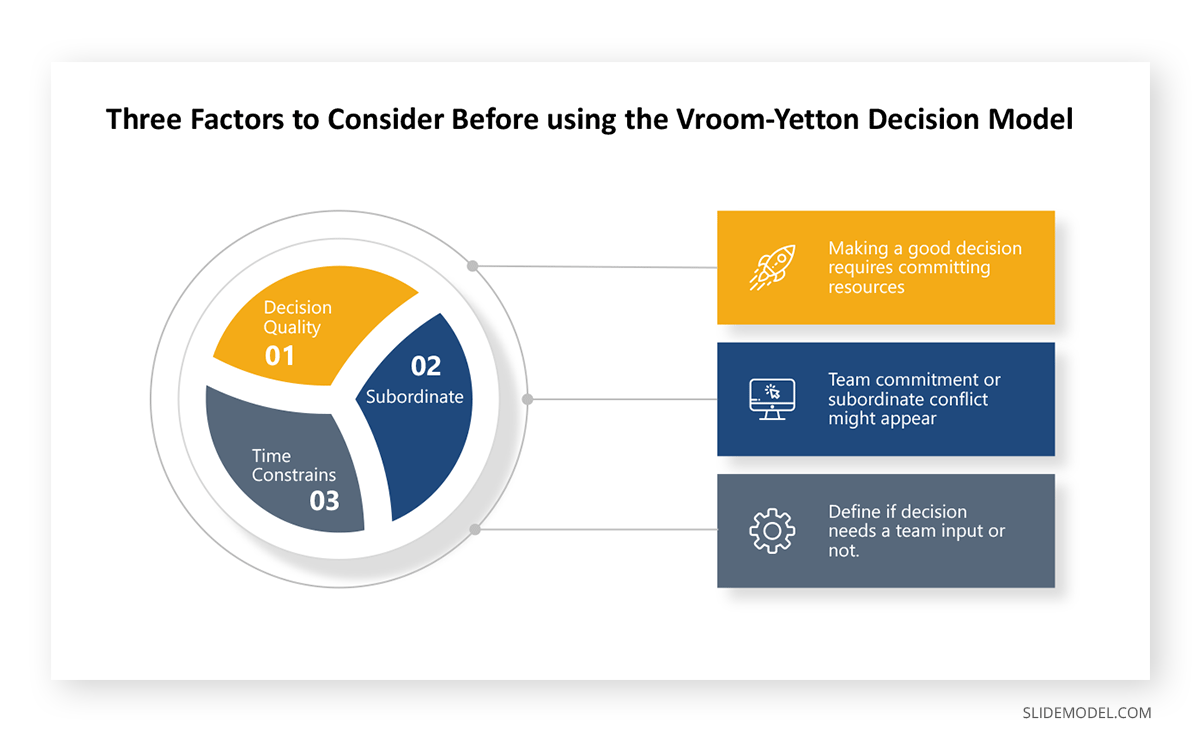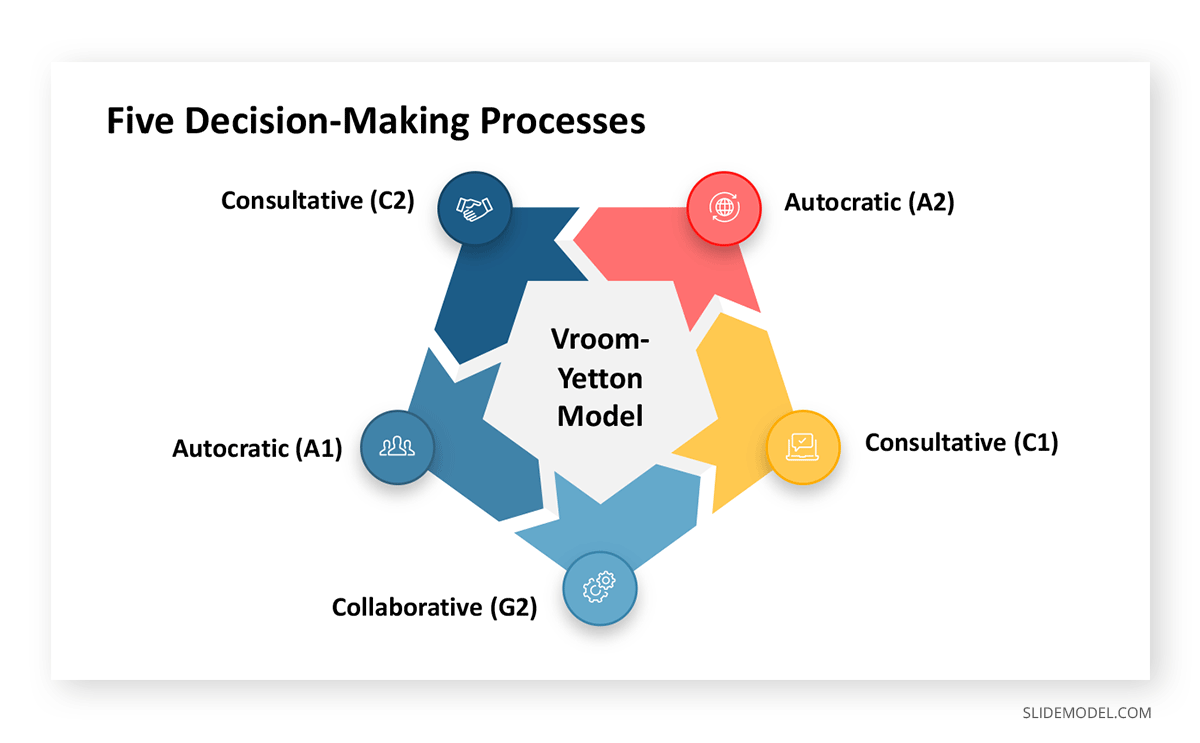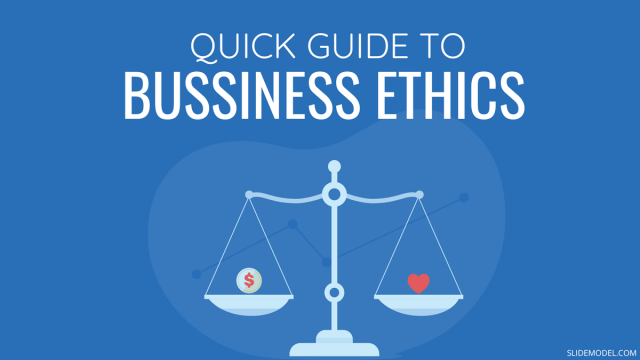
Leadership and decision making require carefully considering the various variables that may result in a positive or negative outcome of a decision; for this purpose, several decision-making theories have been introduced over the years.
The Vroom–Yetton decision model is a situational leadership theory that suggests that the best leadership style is subject to the situation.
What is the Vroom-Yetton Decision Model?
Leaders use the Vroom–Yetton decision model to determine the best course of decision-making by identifying whether the decision should be made alone by the leader or by involving a group. In the latter, the extent to which the group should be involved in decision-making is also determined.
The model was developed by Victor Vroom and Phillip Yetton in 1973. The Vroom–Yetton decision model is an industrial and organizational psychology theory. In 1988 the idea was further modified with contribution by Arthur Jago, after which it was known as the Vroom-Yetton-Jago model.
Three Factors to Consider Before using the Vroom-Yetton Decision Model
The Vroom–Yetton decision model starts by asking three important questions about decision quality, subordinate commitment, and time constraints.
Decision Quality
Every leader wants to make good decisions; however, making a good decision requires committing resources such as time, workforce, money, equipment, etc. Not every decision is worth committing an excessive amount of resources and can lead to an unnecessary diversion of resources.
Subordinate / Team Commitment
Some decisions can affect an entire team/subordinates, whereas others can go unnoticed. When your decision might affect your team, a collaborative process might be the best way to go. This can help in better decision making and effective implementation of the decision.
Time Constraints
For some decisions time is a luxury the leader can afford, however, this isn’t always the case. When faced with time critical decisions which don’t allow you to spend a lot of time researching the variables which might result in a positive or negative outcome, you might require making the decision on your own instead of involving your team.
For more information, check our article about decision-making for business and our collection of decision making PowerPoint templates.

Seven Questions on the Decision-Making Process
The Vroom-Yetton decision model formulated seven critical questions to create a decision tree enabling leaders to make the right choice. These seven questions are associated with quality, commitment, problem structure, leader’s information, goal congruence, and subordinate conflict.
When decision-making is happening, it´s essential to have a process that involves adequate stakeholders, such as creating PowerPoint presentations where the team can understand the questions.
1. Quality Requirement (QR): This question implies considering if the problem process has some kind of quality requirement associated with it.
2. Commitment Requirement (CR): Team commitment can be a major help or hurdle for leaders. This is why the second question in the Vroom-Yetton decision model asks if there is a need for commitment from your team.
3. Leader’s Information (LI): This question is meant for the leader to achieve clarity regarding the available information and whether it’s sufficient for him/her to make the decision alone.
4. Problem Structure (ST): This question asks if the problem is well structured. An unstructured problem, for example, might require looking at the possibility of collaborating with a team.
5. Commitment Probability (CP): This question is meant to assess whether your team would provide you with the necessary commitment for the decision if you made it on your own.
6. Goal Congruence (GC): This question is meant to analyze if the subordinates share the same goals as the organization to resolve the problem.
7. Subordinate conflict (CO): Decision-making is a tricky business, and subordinate conflict can often occur due to certain decisions. This question is meant to analyze this equation to determine if a subordinate conflict is likely over the decision under consideration.

Five Decision-Making Processes
There are five decision-making processes in the Vroom-Yetton model. These processes are mentioned below, with a few examples from famous leaders.
Autocratic (A1)
This includes using existing information for decision-making without any input from the team.
Example: Autocratic leadership styles are common among many famous entrepreneurs. Steve Jobs was often regarded as an authoritarian leader. Some would even argue that he was more of a dictator than a leader. Jobs was accused of not being a team player and was deemed very demanding in terms of extracting outputs from his team. He was seen as someone who liked to have authority over the creative aspects of his products. He believed that people don’t want what they need until they are shown what they require. This is a typical A1-style mindset, which for him was quite successful owing to his creative genius. However, this didn’t make him a very likable individual among his peers.
Autocratic (A2)
Specific information from the team is acquired for consultation and for decision-making. The final decision, in this case, is taken by the leader, which may or may not be shared with the team.
Example: Bill Gates is often attributed to being an autocratic leader, although he is considered to apply more than one style of decision-making. Much of Gates’ success is often attributed to quick and timely decision-making, which requires some form of authoritarian style. He was so authoritarian that he even signed the expenses for his second in command, Steve Ballmer, who later became CEO of Microsoft.
Bill Gates was famous for collecting information from his team and questioning their facts during meetings. His authoritarian style meant that he would question and interrupt their assumptions frequently during a meeting. This is a typical example of A2 since the leader gathers information, strictly analyzes it, and proceeds to decide.
Consultative (C1)
This involves acquiring information from team members individually before the leader makes a decision. The team members don’t meet, and the members individually discuss, evaluate and share information regarding the decision.
Example: C1 is a softer form of authoritarian leadership style. Perhaps a good example of C1 is Jim Lentz, chief executive officer of Toyota Motor North America, Inc, a hands-on leader who works with his team’s challenges and failures.
Consultative (C2)
C2 is a style where the leader gathers a group for discussion but makes the final decision.
Example: The founder of Mary Kay Cosmetics, Mary Kay Ash, was known to put in extra effort to cater to her employees’ needs. She was famous for having a confident workforce, which was rewarded periodically with gifts and perks. She made an effort to keep her employees individually happy and was deemed a C2 style leader.
Collaborative (G2)
G2 requires the group to make a collaborative decision, as the leader supports the team during the process.
Example: Walt Disney, the founder of one of the world’s most profitable entertainment companies in his early days as an entrepreneur, has a collaborative leadership style. While in later years, he adopted various leadership styles, in the formative years of the Disney empire, he used a G2 style. This was also needed in those days as many people required to collaborate together when creating animated stories. Such a successful collaboration could not have been possible without the support of a leader to give his subordinates creative freedom in a collaborative environment.

Final Words
The Vroom–Yetton decision model provides valuable insight into the different decision-making types and offers everything from a decision tree to various decision-making styles that can help make better decisions in real life.
These styles can be applied according to the requirements of an organization but also take away the need to focus on a single type of decision-making style. For example, an authoritarian style might be the only way forward when quick and time-critical decisions are required, especially when dealing with a workforce prone to conflict and politics.
On the contrary, Walt Disney could not have made an entertainment empire without allowing his team to collaborate and design animated stories, which are now cult classics. An authoritarian style in such a case might have meant ruin for the business.
Some leaders lift their employees, and make them feel special through consultation, coaching and a charismatic leadership style. Mary Kay Ash took the time to ensure that she understood her employees and valued their inputs, making her business one of a kind for working women back in the day. Her tendency to collaborate allowed her to better understand and reward high performers, with pink Cadillacs, vacations and jewelry.
The Vroom–Yetton decision model can help you better understand your organization’s needs as a leader and enable you to make the best possible decisions for effective outcomes. A great way to share your decision making, if this is your style, with your team is to create a presentation in PowerPoint or Slides for further group understanding.
While one can be talented and brilliant at their job, making good decisions is arguably half the leadership. Bad decisions are unlikely to cover weak decision-making deficiencies and can lead to social turmoil within an organization. It is here that the Vroom–Yetton decision model can help leaders make effective decisions after carefully considering seven essential questions and by choosing the right leadership style according to organizational requirements.



